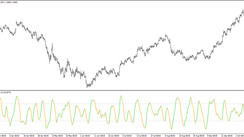In early European trade on Friday, the U.S. dollar slightly increased despite being on track for its sharpest decrease this week since July. This decline comes in the wake of the Federal Reserve's indication of potential rate cuts in 2022 and the steadfast paths maintained by European central banks.
U.S. Dollar Index and the Impact of Central Bank Decisions
Around 04:15 ET (09:15 GMT), the Dollar Index, which compares the greenback with six other key currencies, rose 0.1% to 101.702. This level is not far off the lowest in the past four months, 101.459, which was seen earlier on Friday. So far this week, the index has already dropped by over 2%.
Contrary to the generally dovish outlook embodied by the Fed's inclination towards rate cuts, the European Central Bank (ECB) and the Bank of England (BoE) have maintained a hawkish viewpoint. Both have declared their intent to continue with strict policies in the coming year to counter inflation.
Following a two-day meeting, ECB members didn't even raise the topic of policy easing, while the BoE indicated high rates could persist for a long period. These stances contrast the Fed's, suggesting the dollar will lack popularity as the year wraps up.
Fed's Shifting Stance and European Central Bank Reactions
After an intense round of central bank meetings, analysts are drawing conclusions. According to ING analysts, European policymakers have been more willing to challenge market projections for 2024 rate cuts compared to the Fed.
John Williams, a Federal Reserve policy maker, is anticipated to clarify this perception in a later session. Investors will be paying keen attention to any allusion to rate cuts. Should Williams reference rate reductions, as per ING's suggestion, the dollar's position could continue its current weakness.
Euro, Sterling, and Yen Movements
Meanwhile, both the euro and sterling slightly retreated from their recent peaks. Disappointing business activity figures in Germany pushed EUR/USD lower, indicating a potential recession risk in Europe's largest economy.
On the other hand, policy makers from the BoE, notably displaying a hawkish stance, led the sterling to a four-month high. As quoted by ING, sterling's surge was mainly due to a lack of any dovish outlook in the BoE statement.
In Asia, the USD/JPY traded marginally lower, while the yen remains steady close to a four-month high against the dollar. However, the yen's gains could be limited as the Bank of Japan is expected to continue its ultra-dovish policy next week.





